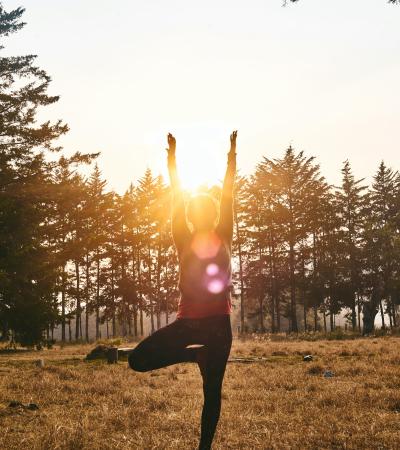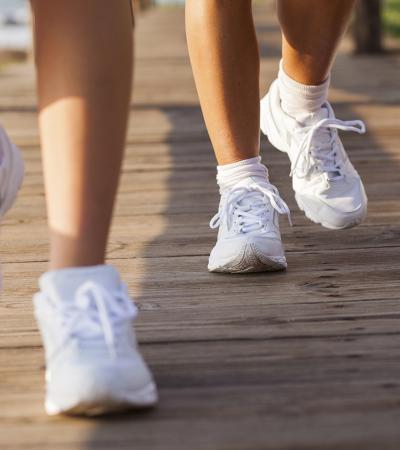Wise Walk brings together a diverse group of older adults for a 10-week walking program held in the spring and fall. It provides a group setting where walkers can find partners who walk at a similar pace and distance. Participants keep track of the distances they walk each week, and if they are able, they are encouraged to set goals to increase their distance. Water and a healthy snack are provided at the end of each walk, and walkers are given the chance to socialize at this time. Special programs, such as a stretching and exercise class or a visit by a local doctor, are occasionally held to promote general fitness.
Advanced Planning
In 2008, the Allegheny County Library Association originated the Wise Walk program and organized the sponsorship. They invited all the public libraries in Allegheny County to participate. After five years, ACLA and the sponsors terminated their role in the program, and libraries were free to continue the program on their own.
We felt this would be a worthwhile program for our community as we have a large senior population, many of whom had previously shown an interest in health and fitness programs. In addition, the library is centrally located in the Village of Sewickley and thus is provided with an excellent setting for walking. As we had a core group of dedicated walkers, we decided to continue the program.
Marketing
The Wise Walk program was promoted through the library’s monthly newsletter, posters within the library and on our website. Our local newspaper, the Sewickley Herald, also published several articles about the program. The first season we had 17 walkers sign up. Over the years, registration varied from 10 to 30.
Budgeting
During the first five years of the program, the sponsors provided a variety of incentives. These included t-shirts, pedometers, water and healthy snacks such as granola bars, fresh fruit, small bags of nuts, trail mix and crackers. When the sponsors dropped out of the program, we had to fund the program ourselves. We chose to eliminate the t-shirts and pedometers because of the cost, but we did continue providing water and snacks. The cost varied depending on the number of participants, but we found it to average between $75 and $125 for the 10-week session. We saved money by purchasing items on sale or in bulk from local discount stores such as Costco, Walmart and Sam’s Club.
Day-of-event Activity
We had a designated area in the library where walkers met. Before they arrived, I put out water, snacks, nametags and informational fliers on tables in that area. As walkers arrived, I asked them make a nametag and to fill out and sign a hold-harmless agreement, which would protect the library in case of a fall or an accident. Since our walks were held in the Village of Sewickley, I prepared a map of the community and marked several routes showing the distances of each.
Once everyone arrived and signed in, I briefly explained the program and made a few announcements about upcoming events or other related activities that might interest the group. We left as a group but walkers soon broke up into groups according to their abilities and generally walked from half a mile to three miles. When they returned, they were asked to log their distances walked in steps on a simple spreadsheet that I provided. (View the spreadsheet under Attachments at right.) They then picked up water and a snack if they chose and were welcome to relax and socialize.
Program Execution
We had varied responses to the program. Some people came once or twice and never returned; others came for one 10-week session and didn’t come back; others have participated since its inception. We generally had 20 to 25 people register for most 10-week sessions and usually had 12 to 15 walkers each week depending upon the weather and time of the year. We also observed that participants who found walking partners tended to stay in the program longer.
During the time that the Allegheny County Library Association monitored the program, they asked participants to fill out a short survey indicating what participants liked or didn’t like and make any suggestions that they thought would improve the program. Program leaders were also asked to submit a form listing weekly and total attendance, breakdown by gender, and the number of recorded steps and miles. Once we began running the program ourselves, I kept records of the weekly and total attendance. I also kept spreadsheets showing each participant’s number of steps walked and the total number of steps and miles walked for each 10-week session. Participants were quite interested in keeping track of the number of steps/miles they walked through the course of the program, and they were surprised at the total miles walked by the group, which usually exceeded 300 miles.
Advice
Use nametags for the first week of each session so newcomers get to know one another. If you plan on handing out promotional items such as t-shirts, caps or water bottles, do it the second or third week. We found that a few people will sign up the first week just to get those items and do not come back for the rest of the program.
Plan additional activities occasionally. We arranged for the director of our local historical society to provide a guided tour through the cemetery, pointing out the historical significance of various gravesites. On another occasion, we were given a guided tour of a local historical home. On the first Thursday of each month, a local church holds a salad luncheon, which many in the group enjoy attending together following their morning walk. I have since organized the program at another library in a more suburban setting where we take our walks in a local park.
Supporting Materials
- Feedback (Coming Soon!)
- Programming Librarian Facebook Group


